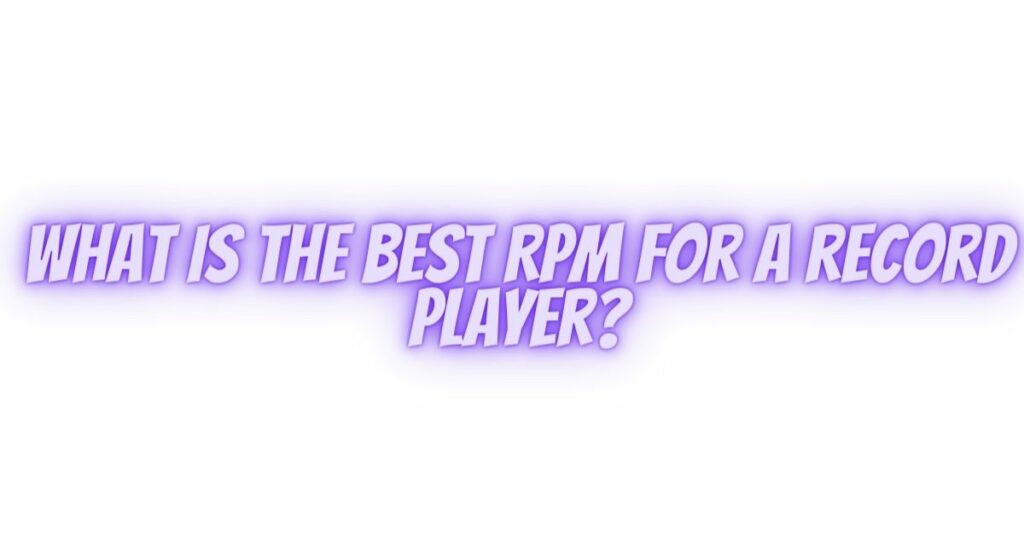Selecting the ideal RPM (Revolutions Per Minute) for your record player is a critical decision that directly impacts your vinyl listening experience. RPM determines the rotational speed of the turntable’s platter, which in turn influences sound quality, record longevity, and the listening experience. In this comprehensive article, we’ll explore the various RPM options available for record players, their differences, and how to determine the best RPM for your vinyl collection.
Standard Record Player Speeds: 33 1/3 RPM and 45 RPM
Most record players come with two standard speeds: 33 1/3 RPM (Revolutions Per Minute) and 45 RPM. These are the industry-standard speeds for LPs (Long Play) and singles, respectively. Each speed serves a specific purpose:
- 33 1/3 RPM: This is the standard speed for most long-playing (LP) records. LPs contain a larger amount of content per side, typically a full album, and are known for their superior sound quality and lower surface noise. At this speed, a 12-inch record typically provides up to 22 minutes of music per side.
- 45 RPM: This is the standard speed for most singles and EPs (Extended Play) records. 45 RPM records contain shorter tracks and are commonly used for individual songs or shorter releases. While they may offer better sound quality and volume, the playback time per side is limited to about 7-9 minutes.
Choosing the Best RPM:
Selecting the best RPM for your record player depends on several factors:
- Record Type: The type of records you own and plan to play is a key factor. LPs are best played at 33 1/3 RPM, while singles and EPs are typically played at 45 RPM. Playing a record at the incorrect speed can result in pitch and tempo variations.
- Sound Quality: The RPM you choose can also affect the sound quality. Many audiophiles prefer the slower 33 1/3 RPM for its superior sound quality and lower surface noise. However, 45 RPM can provide better dynamic range and volume for shorter records.
- Turntable Compatibility: Some record players offer multiple speed options, allowing you to switch between 33 1/3 RPM and 45 RPM. Ensure that your record player supports the RPM you wish to use.
- Record Labels and Releases: Pay attention to the label and release information on the record jacket. It often specifies the recommended RPM for the best sound quality.
- Personal Preference: Ultimately, the choice of RPM can also be a matter of personal preference. Some listeners may prefer the warmth and depth of 33 1/3 RPM, while others enjoy the punch and volume of 45 RPM.
Additionally, there are a few less common record player speeds, such as 78 RPM, used for older shellac records, and 16 RPM, sometimes used for spoken-word or audiobook records. These speeds are relatively rare in modern record players but can be accommodated with the right equipment.
Conclusion
Choosing the best RPM for your record player is essential to ensure that you enjoy the full potential of your vinyl collection. By considering the type of records you own, your sound quality preferences, and the capabilities of your record player, you can make an informed decision. Whether you opt for the warmth of 33 1/3 RPM or the punch of 45 RPM, the most important thing is to savor the timeless magic of vinyl music in the way that brings you the most joy.


